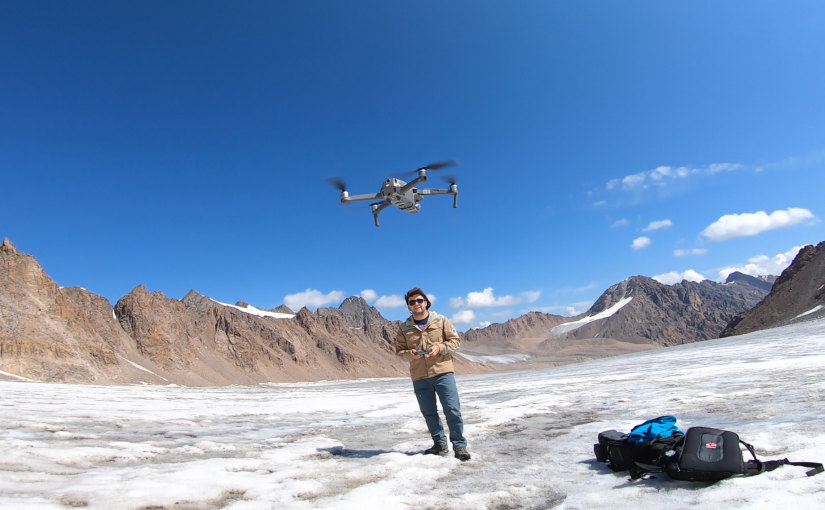For the scientists working in the field, it is not only about their scientific expertise and the knowledge they have gathered throughout their careers. They need to be incredibly fit and trained to deal with several situations the work in the field may bring.
” You, Mr. Jonas and Mr. David, are supermen,” shouted Ramazon, the Head of Glacier Centre of Tajik Hydromet Service, at the two scientists from the Finnish Meteorological Institute (FMI). We are at the base camp below the Turgen-Aksu glacier in Kyrgyzstan, about 70 kilometers from the boarder of China, and we have just finished our mission for today.
Jonas Svensson, a postdoctoral researcher at FMI, has brought on his back several kilograms of snow from the accumulation zone of the glacier. The accumulation zone is an area on the glacier where there is a surplus of snow. Melting occurs in this region, but the different melting processes are not prevalent enough to melt all of the yearly incoming snow. He climbed to the zone together with another three members of our expedition – Konstantin and Tyntshtyk from the Kyrgyzstan Hydromet service and the above mentioned Ramazon. This part of the expedition was to climb up to 4165m above sea level to assess the snow conditions and to collect snow samples. Reaching the accumulation zone is not day-to-day business. Using different climbing equipment, the team was tied together by a rope to protect one-another against falling into hidden glacier crevasses.
“Once we reached the accumulation zone, we started to measure snow depths in different locations and to dig out samples of snow from different depths, carefully packing them, before bringing them down to the base camp,” says Jonas. “I will filter the snow here in Kyrgyzstan and bring the samples to Helsinki, where I will analyze them in the laboratory. The reason for this mission is to know more about how different light-absorbing particles are affecting the glacier’s snow. This will determine the anthropogenic and natural source of particles in the local snow, which will ultimately discern the effect of air pollution on the glaciers’ mass balance”.
Jonas has gone through several courses to be able to go so far up. He and David Brus went through various trainings, including: climbing, avalanche risk, and wilderness first aid. I was impressed how determined they were to make this expedition a success.
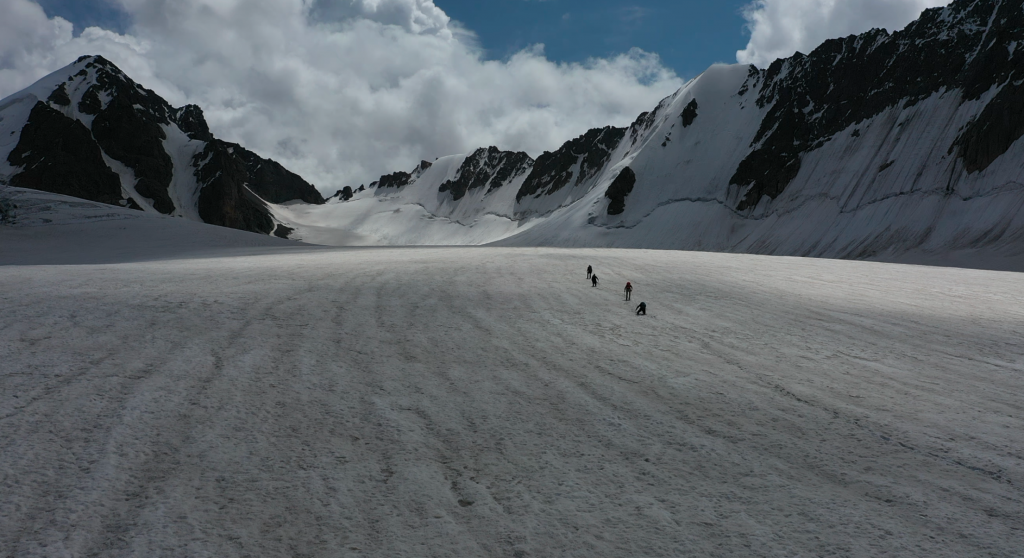

The expedition life is not easy
I myself have joined the expedition to communicate it outside and to gain a visibility for the project and its mission. I was not sure at the beginning whether I should really participate, after all, the scientists themselves are usually very skilled writers, they are able to make beautiful videos with drones, and most of them are also posting material on social media.
What I have not realized before is the fact that the program of the expedition is fully-packed and there is close to zero time for anything else, but the mission. They are waking up early in the morning and work late in the evening, sometimes even at night.
The second point is that they have already so much experience working in these remote places, that they consider things that would easily shock others (like they shocked me) completely normal. When I entered the room at the avalanche station on the foothills of the valley heading to glacier, I wanted to start crying. I have never slept in such poor conditions before. When I entered the dry, squat toilet behind the house, I was agonized. But others were completely fine with it. David, who has already participated in expeditions both to the Arctic and the Antarctic started to laugh, saying “You should have seen the toilet in Tiksi, Siberia, with the winds blowing up the air of -25 degrees.”
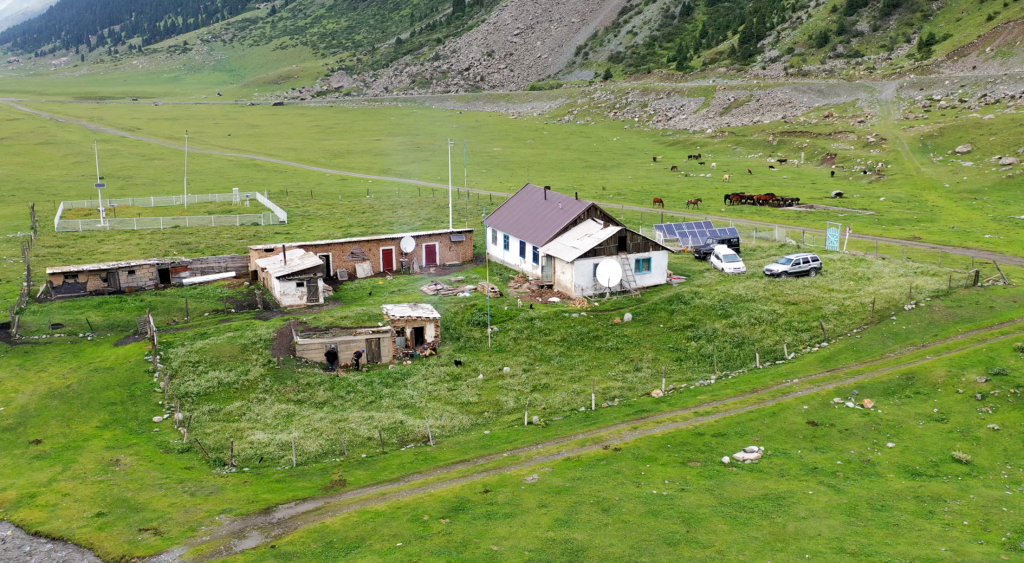
David Brus, a senior scientist at FMI, was leading the expedition from the Finnish side, and his main quest was to map the glacier with drones in order to quantify changes to its surface area. He and his Tajik colleague Yakob, walked up and down the different zones of the glacier to be able to map its entire size of 6km2.
Being a scientist is not only about working in the laboratory or sitting behind the computer. Those women and men working in the field must be quite fit, ready to cope with hard and uncomfortable conditions, go through several trainings and on top of this, make sure the scientific mission of the expedition is successful.
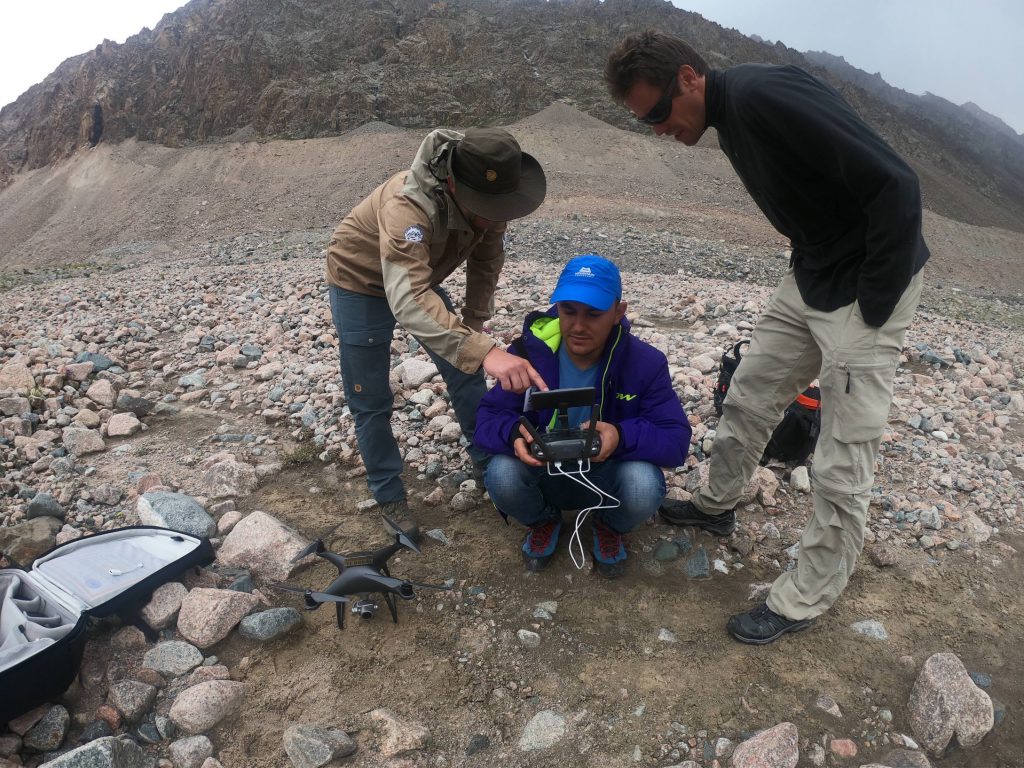
Expedition life is not only about suffering, but it is a great adventure
But there are two sides of a coin. Crossing the glacier moraines in a heavy rainfall, crossing a wild river on a horse back, jumping over the cracks in the glacier where you cannot see the bottom are terrifying, but in the end very adventurous things most people will never experience in their lives. Seeing the beautiful mountain sceneries, a rich biodiversity around the river and pristine night sky views are other rewards besides achieving the goals of the scientific mission.
New friendships, exploring and experiencing the local culture is a cherry on top. Our team from FMI was amazed by and grateful for the hospitality of our Kyrgyz colleagues. “The expedition team is a family. We rely on each other, we help each other and we share a good sense of humor together,” says David.
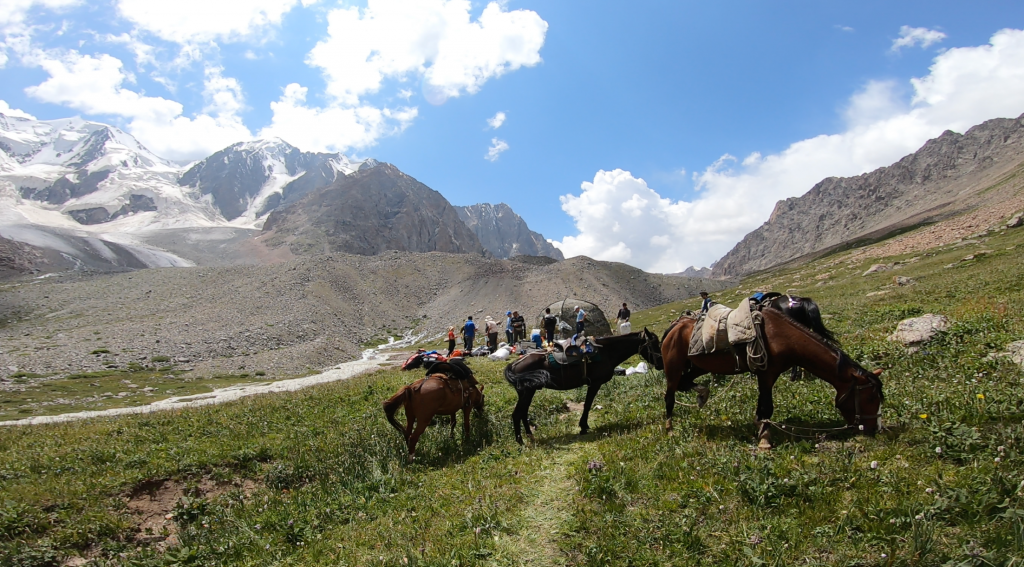
Text and pictures: Magdalena Brus, Senior Communications Managers at ICOS RI on behalf of Finnish Meteorological Institute
Main picture of the article: David Brus (FMI) sending his drone to map the top of the glacier, about two kilometers far from the take off point.
The mission described above has been funded through the development program organized by the Ministry for Foreign Affairs of Finland, right now focusing on the countries in Central Asia. This capacity-building initiative has been running for about five years, with research campaigns and expeditions being organized in Tajikistan and Kyrgyzstan as well as in Finland. This article is describing the latest scientific expedition which was organized from July 28 until August 7, 2019.

